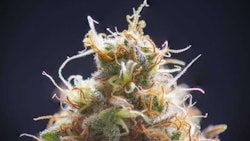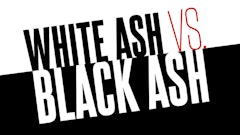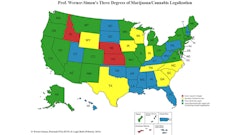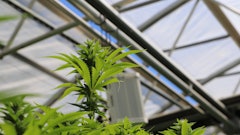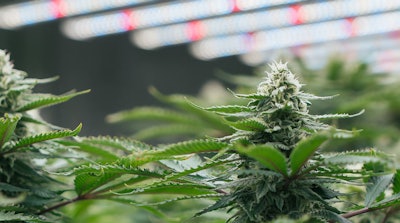
When it comes to energy-efficient systems like LED lighting and purpose-built integrated HVAC-D, cost can often be the hurdle preventing cannabis companies from adopting them.
Despite the increasing number of utility providers offering incentive programs and grants that can discount or even pay off those upgrades, more than half (56%) of the study’s participants
Make no mistake, utilities want to partner with cannabis and CEA operations to increase the adoption of high-efficiency systems. More and more of these programs target systems beyond lighting, with some going so far as to offer incentives for (provable) general efficiency and resource-use improvements, making now the best time to begin working on these project plans.
To help guide cannabis growers on their efficiency rebate journey, Resource Innovation Institute (RII) offers these tips and insights on getting the most out of these utility incentive programs.
1. Start with prescriptive programs.
Incentives and rebate programs can broadly be categorized into two buckets: prescriptive and custom. Prescriptive programs often will target energy-saving measures or technologies with predefined incentive amounts–i.e.
These programs are typically funded by the energy efficiency charges on everyone’s utility bill—mandated by states to fund efficiency programs. In some cases
Prescriptive programs generally will have straightforward requirements outlined in the program’s details. Customers can receive incentives by implementing the specified measures without the need for complex calculations or detailed performance assessments (although that may not always be the case).
Looking into the availability of these programs in your state can also help identify priority areas to target in your operation. Some states and utilities just starting to implement incentives for cannabis growers or CEA operations
2. Consider custom programs.
Custom incentive programs, as the name might suggest, are for more unique projects that do not fit the scope of prescriptive programs but that can still offer energy-efficiency improvements. These projects are often tailored to the specific needs and circumstances of the customer and typically will require a more detailed analysis of the energy savings potential of the proposed project. This may involve energy modeling, engineering studies, and performance assessments.
From an HVAC-D system perspective, custom rebates are often the only practical path forward. Purpose-designed, integrated HVAC-D systems can save up to 40% in energy compared to standalone equipment,
“In general, custom programs require more effort on the part of the utility customer,” says Jeannie Sikora, an energy engineer at CLEAResult, a North American provider of emission-reducing energy solutions. “But we can get to deeper levels of savings and higher incentives, so it can often be worth it. Plus, you’ll be working with an energy engineer who may be able to spot issues. So, the extra effort to extract data from your growing software can pay off.”
RELATED: 8 Tips to Reap the LED Rebate
While they can require more benchmarking and verification work (although unusual, some custom incentives programs can take more than a year of work before paying out), they generally also have greater returns as they aim to maximize resource efficiency across multiple facility areas.
“Custom incentives can also combine energy rebate measures from a utility into a larger scope,” Sagal says. “Advanced lighting controls, coupled with LED lighting, energy monitoring, and HVAC and dehumidification systems that verifiably deliver greater efficiencies, may qualify for greater incentives.”
3. Weigh your rebate options.
Efficiency program rebates and incentives can take many different forms, offering different benefits and different payout timelines. Understanding the program’s incentive structure can help facility operators prioritize applications and budget appropriately.
For example, a rebate isn’t going to directly reduce the purchase cost like an over-the-counter (OTC) discount from distributors. OTC discounts are becoming more popular. “It’s convenient for the customer,” Sikora says, “because there's no paperwork except for bringing your utility bill to the sales counter.”
4. Be patient.
In his time working with cannabis companies to help them maximize energy-efficiency program benefits, Sagal highlights an important point that growers must be aware of how these incentives work: they do not pay growers upfront. For operators eager to get systems installed to reduce their ongoing operating expenses, incentives are sometimes overlooked. “They're doing so many things at once they don't have time to investigate, be bothered, or go through the pre-application phase [with it,]” Sagal says, meaning tens of thousands of dollars
Depending on the provider, some approval and pre-approval processes can take 60 days or more. This waiting period can leave growers in limbo, unsure whether they can move forward with the high-efficiency product purchase.
5. Know who your utility provider is.
As mentioned, incentive programs can vary across markets and utility providers. Knowing who provides your facility’s power is crucial to successfully
As an example, “Xcel Energy in Colorado and Minnesota offers high incentives for LED adoption and efficiency programs, while other utilities within those states may not,” Sagal shares. Differences between utilities may also affect incentive programs. Compared to private/public utilities, Sagal says, municipal power providers may offer lower rates to their customers but without the availability of lucrative rebate incentives.
“In some situations, there is value in staging the on-off sequence to avoid power spikes,” Seidel notes. “Many areas also provide incentives for off-peak power usage.”
“If you have questions on rebate programs or options, reach out to a local rebate specialist,” Sagal says. Increasingly, product suppliers are offering rebate services to customers to help with the application process
6. Invest the research time when operating in multiple markets.
Efficiency benchmarking standards, efficiency target priorities and goals, and rebate and incentive program operations may vary across states. For example,
Additionally, cannabis operators should consider exploring prescriptive programs that target non-cannabis (or even non-CEA) operations, as there can be significant savings for which cannabis companies may qualify.
7. Look beyond lighting.
LED rebates are often the most common and most accessible for cannabis cultivation operations. In more mature cannabis markets where efficiency benchmarks are already rising, incentives for LED systems may eventually be phased out. As the industry’s efficiency standards rise, there becomes a point of diminishing efficiency returns for incentive program managers. That said, once prescriptive LED programs are tapped out, cannabis growers can turn their attention to custom projects that offer energy efficiency or productivity benefits.
For example, Sikora is working with a lettuce grower who is looking to supplement
Facility operators can expect HVAC-D system rebates to become increasingly prevalent. In addition to
Advanced automation control systems are another area that can be ripe for custom rebate projects. Syncing lighting systems and environmental control systems can achieve significant energy savings (in addition to improving crop outcomes). These can be especially effective in greenhouse operations where there can be greater variance in the cultivation environment, Sikora says.
“We're seeing a lot of innovation in the use of controls that can increase energy savings, and, in general, incentives are proportional to the amount of energy you're saving,” she details.
Other areas in which she is seeing innovation are airflow optimization and water circularity. These types of projects “generally won't have big incentives like horticultural lighting usually does,” Sikora notes. “But there’s the opportunity, as long as the grower is willing to put in the effort, to get incentives for innovation.”
RELATED: 3 Considerations to Improve Cultivation Efficiencies
8. Always be tracking.
“It's important for growers to pay attention to the data, not just benchmarks, but to analyze those trends over time,” Sikora says. “Tracking key performance indicators over time can really help you figure out when there are issues that should be addressed.” That’s one of the benefits of working with utility program energy engineers, she adds.
RII’s PowerScore platform can help facility operators measure and verify facility efficiency and productivity by revealing operational key performance indicators of facilities and crops to compare against key performance targets and see year-over-year trends. That said, some metrics can be tracked in-house. For example, measuring product yield over energy use (e.g. kilowatt-hours per pound) can help growers track how higher-efficiency practices can have real-world impact.
Some programs (especially custom ones) may require historical data for the application to qualify. Others may mandate ongoing data shares to remain eligible. Having a robust and comprehensive data tracking plan is crucial to maintaining an efficient facility, identifying potential areas of improvement, and increasing the opportunities to develop a productive relationship with utility incentive program managers.
Robert Eddy, M.S., is Resource Efficiency Horticulturist with the Resource Innovation Institute.











